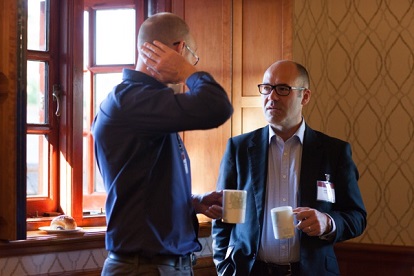Expert: Kamal Patel, Head of Change and Technology, SEI Facilitator: Caroline Burkart, Aon
Headlines:
- It is important that the whole business understands what transformation is and how to set a transformation up for success
- The whole business needs to buy into why the transformation is happening and domain expertise needs to be involved from all parts of the business to ensure project success
- Subject matter experts need to be involved but everyone needs to understand what you are solving for
- The size of the firm will dictate how a project is managed and run. A small firm will do things very differently to a large firm with significant resources but these core principles remain the same
- A lot of mid to small tier firms are trying to run transformation projects from the side of their desk and while it’s not a bad thing, there is a lot of work involved and the task shouldn’t be underestimated
Context:
The first key question from delegates was how to find a good project manager with the right skills set to manage a transformation project for the business.
In selecting the right person, key questions need to be asked around their experience such as how they managed a project if/when things went wrong, talk about 3 issues that they have had to manage, how were these resolved?
It is key when implementing a project to remember what the objectives are, what are the goals and what are you trying to achieve. A good project manager needs to be tough to execute to plan but also to have the ability to keep the executive team engaged throughout the project. Strong communications skills are important.
It is critical to communicate to the right people at key moments in the project. Key stakeholders need to be kept informed with the right amount of information at the right time. Keep a strong focus on how issues are being identified and raised and how those key moments are being managed.
It is very important to keep a focus on the human side of things as well as the technical aspects of the project. How individuals are impacted, and what contribution they can make to the planning and execution that will be relevant and of value.
External consultants can add value as a sounding board, bring in expertise, teach and train internal people to run the project, give an external perspective and be the fall guy if things start to go wrong.
One delegate asked why there was so much negativity around change management and this was put down to change fatigue and the same SMEs always being asked to run projects, due to longevity and corporate knowledge. Also, it is often the case that completely different issues emerge during the project from the original objectives of the project, because not all departments have communicated with each other.
Data can be a barrier – you need to get access to enough of the right data to support the project direction. One delegate stated that data was their key barrier. Other delegates agreed that knowing what data to access and getting that access can be a stumbling block.
It is important that the right questions are being asked and that the right data is being used to inform and support decision making. What data feeds are needed? Actions such as an IT scan, and operational scan need to take place to identify potential and actual pain points and full information on how the current operating model works versus where you want to get to is important.
It’s very important that everyone is aligned around the objectives of the project. Is the seller asking the buyer the right questions. What is your data like? Where is it stored and how is it presented?
MI is needed to prove each element of the project so that agreement is aligned around each action of the project. UAT (user acceptance testing) is also important to bring in at the earliest point.
Get all the right people involved. As well as SMEs and the technical people, get Marketing and HR involved also, develop user acceptance testing for everyone and ensure this is brought in at the earliest possible point so that you can see what’s coming down the line.
Communications are absolutely key so that everyone is kept informed and if things drift/are late, explain why this is the case, and what is being done to rectify the delay.
It is very important not to cut corners or the quality or timelines will be severely impacted.
Key takeaways:
- The main lack of project success is down to poor communications and poor implementation definition
- The right people need to have the authority to make decisions or it will cost more and take longer
- The full spec of a project is very rarely delivered in reality. It is often the case that the objectives at the start of the project are compromised often due to expense and if the real expense was stated, approval would never get through
- However, even if a project ends up being more expensive, the business would have been in a worse position with no project
- It is important to involve everyone in the decision-making process so that everyone has a say and contributes to an agreed sign off
- Juggling offsets between time, cost and quality are all elements that impact the delivery


